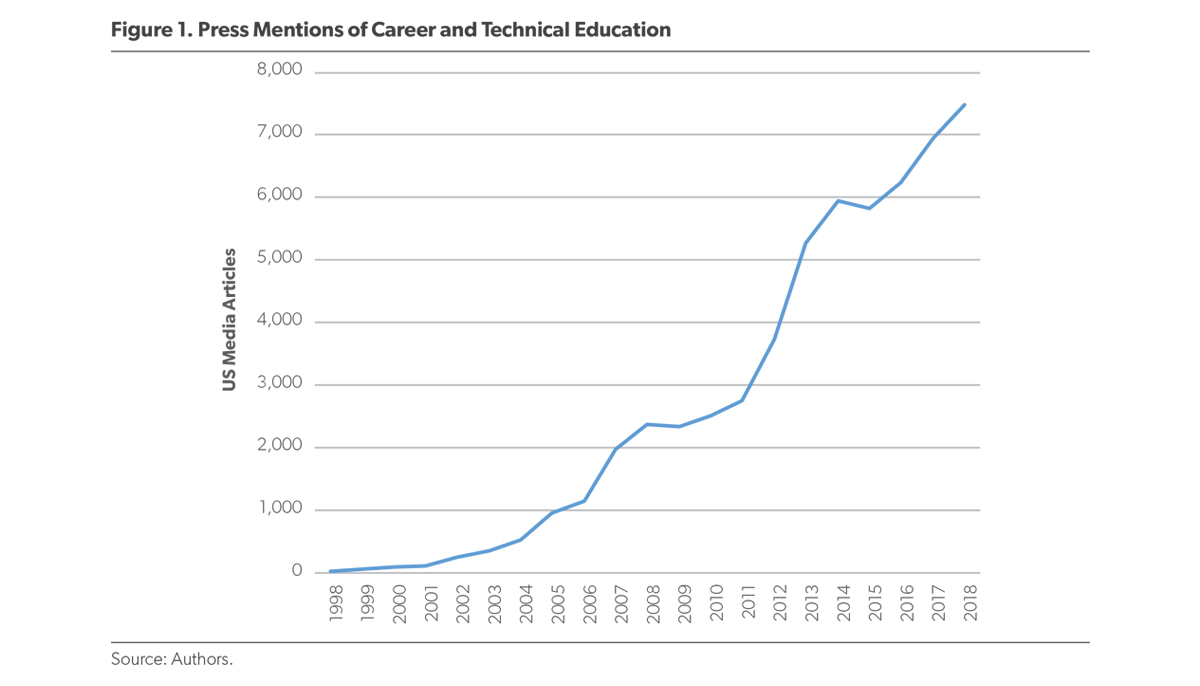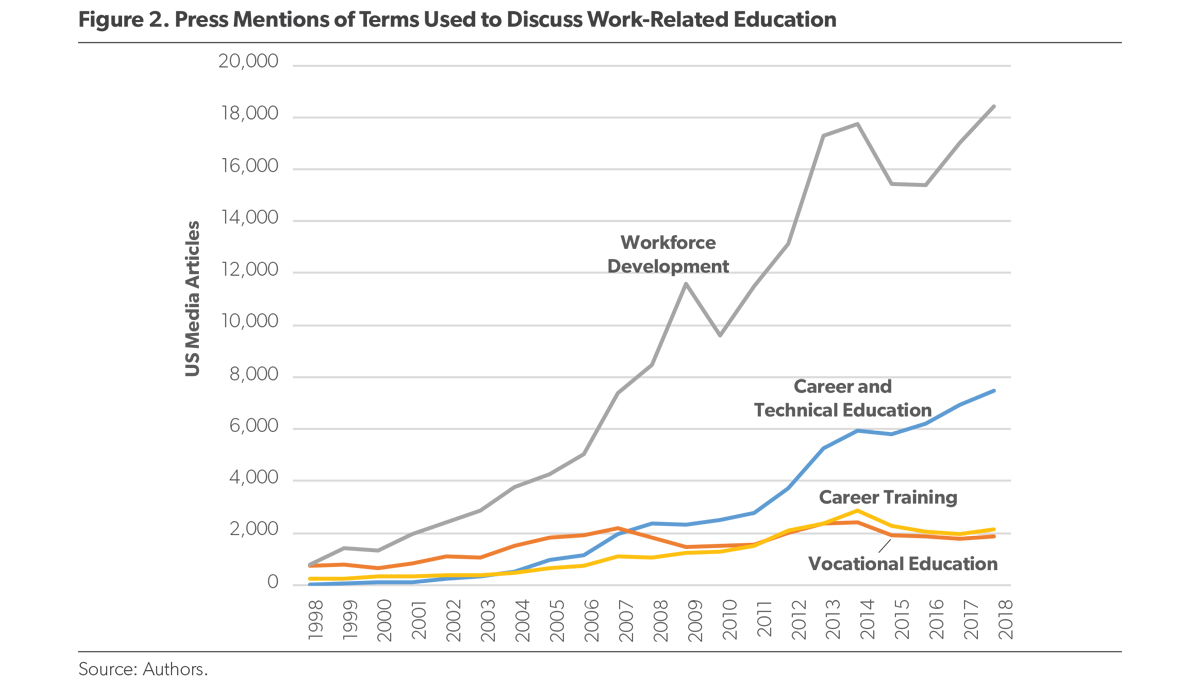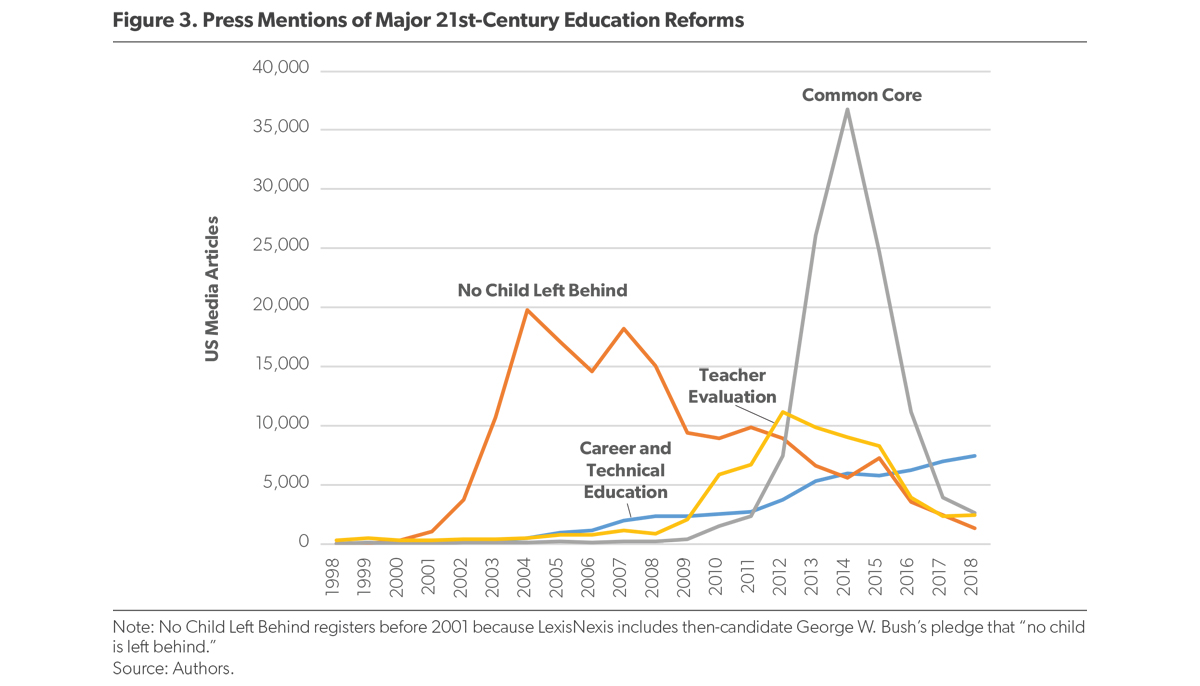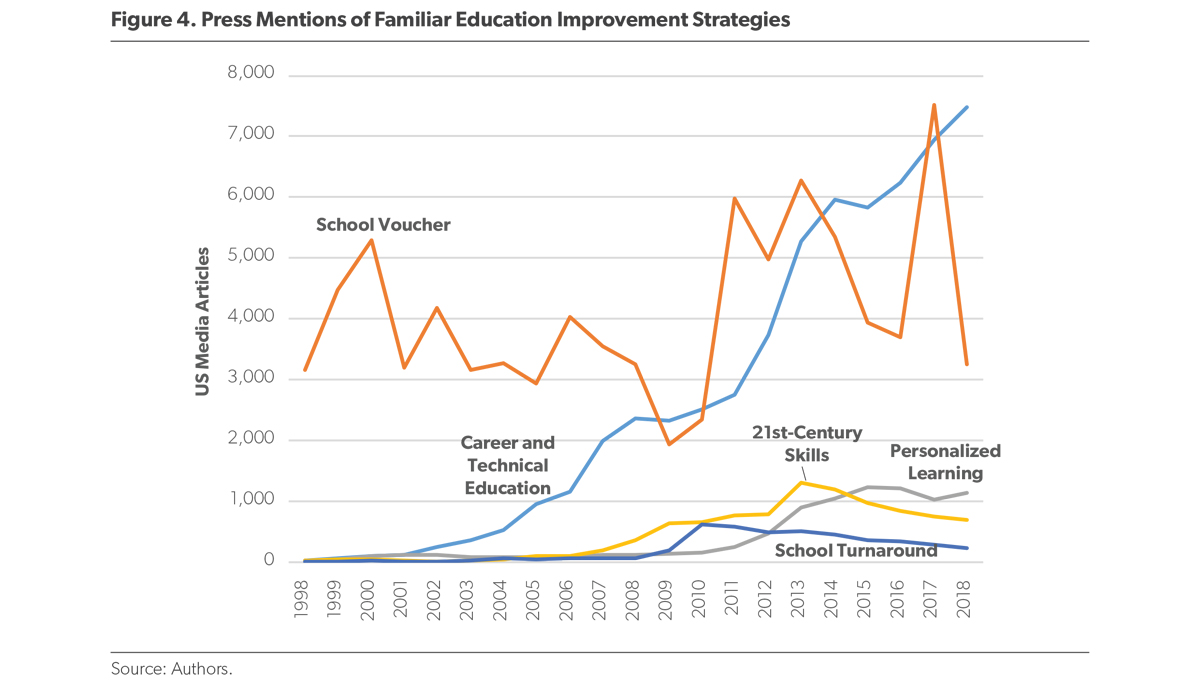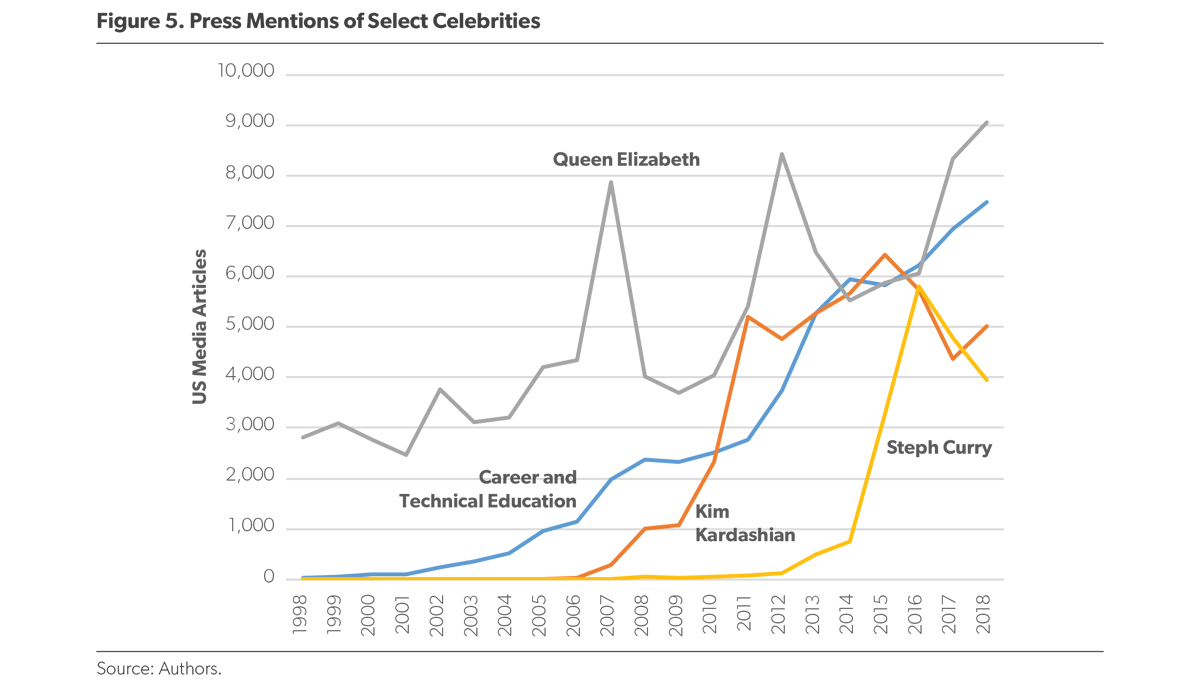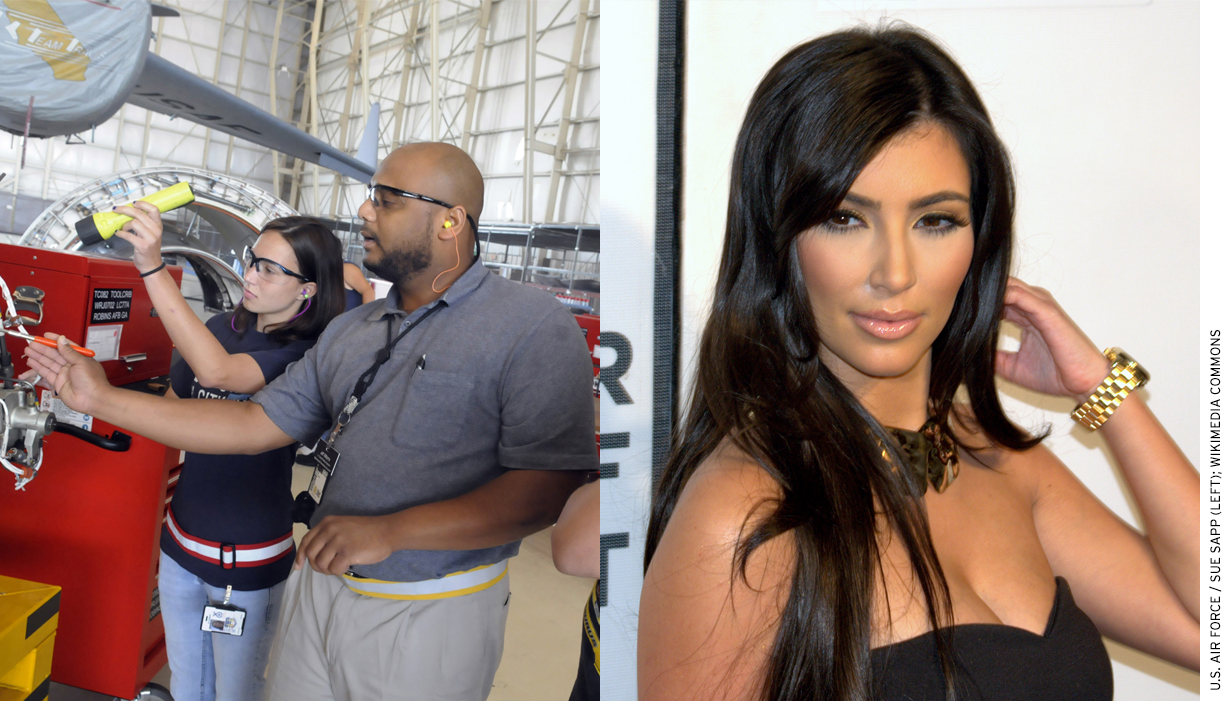
Over the past couple years, career and technical education has garnered a lot of attention. Politico reported that 49 states and Washington, DC, enacted 241 career and technical education–related laws, executive actions, and budget provisions in 2017. [1] The National Governors Association has tagged career and technical education as one of its 12 priorities, and Jobs for the Future has observed that career and technical education “has become the ‘next best thing’ in high school reform.” [2] A 2018 AEI study found that career and technical education was the only education issue a majority of gubernatorial candidates supported. [3] Meanwhile, a 2018 analysis reported that the number of high school students concentrating in career education rose 22 percent, to 3.6 million, during the past decade. [4]
All this raises a big question, given education’s long experience with fads and shifting sentiment: Is the boom in career and technical education one more fad, or does it reflect something more substantial? That answer matters for how much attention this push deserves from educators, parents, and policymakers.
In a stab at addressing this question, we examined the media attention devoted to career and technical education over the past two decades—and how that compares to the attention devoted to other popular 21st-century education reforms.
We used the search engine LexisNexis (a database of news articles from national and international media outlets) to identify the number of articles each year that mentioned career and technical education and, for comparative purposes, other related terms. We searched for “career and technical education” rather than “CTE” to not inadvertently include articles about chronic traumatic encephalopathy, a degenerative brain disease that has received extensive coverage for its impact on former football players’ health.
In all cases, we searched for articles in the LexisNexis category “US Publications,” a compilation of major US media sources.5 While that LexisNexis category is comprehensive, it is not exhaustive. For example, blogs and some education-specific media, such as Education Week, are not included. The exclusion of specialized outlets helps ensure that the results are a pretty good gauge of how much attention the relevant issues received across the broad sweep of US media.
Since 1998, the number of articles mentioning career and technical education has increased more than a hundredfold, as displayed in Figure 1. Since 2004, media mentions have grown over tenfold, and they have doubled since 2012. In short, the coverage devoted to career and technical education has exploded during the past two decades.
This heightened interest in career and technical education is part of a larger trend, which entails increased attention to skills training and workforce preparedness (Figure 2). Indeed, media mentions of workforce development increased by a factor of 13 in the past two decades.
Meanwhile, other training-related terms that were once more common than career and technical education have not kept pace. In 1998, career training was more ubiquitous than career and technical education was, but it was surpassed by career and technical education in 2004 and is now mentioned not even one-third as often. Vocational education was once mentioned 10 times more often than career and technical education was, but starting about a decade ago, it plateaued and was surpassed by career and technical education. It seems safe to say that mentions of career and technical education have come at the expense of vocational education and career training; less clear is whether that shift has any substantive import or is mostly a question of branding.
To put coverage of career and technical education in context, Figure 3 shows the attention devoted to three of the 21st century’s most notable education reforms: No Child Left Behind (NCLB), Common Core, and the Obama-era push to overhaul teacher evaluation. At their peaks, No Child Left Behind and Common Core received three to five times as much media attention as career and technical education garnered last year. At its height in 2012, teacher evaluation received 50 percent more attention than career and technical education received last year. Yet, while it has not come anywhere close to those peaks, career and technical education has shown a markedly different public profile than these other reforms—all of which exploded to public consciousness over a span of three or four years and then declined. Career and technical education, on the other hand, has seen a long, dramatic, and uninterrupted build over an extended period of time. Given this long pattern and an attendant lack of controversy, career and technical education seems unlikely to experience the rapid declines in public interest endured by these more polarizing reforms.
Career and technical education even outpaces the attention devoted to other familiar education improvement strategies (Figure 4). For instance, one of the more high-profile education reforms of the past two decades has been school vouchers. From 1998 to 2008, media mentions of school vouchers significantly exceeded those of career and technical education. Over the past decade, however, career and technical education caught up to and then surpassed attention devoted to vouchers. This is noteworthy given that vouchers have long been the kind of controversial issue that attracts press attention, while career and technical education has tended not to evoke such strong emotions. Meanwhile, whereas attention to career and technical education was once indistinguishable from that shown for other long-standing enthusiasms, such as school turnarounds, personalized learning, and 21st-century skills, career and technical education has steadily distinguished itself over the past 10–15 years.
Mostly out of curiosity, and partly to get a little perspective on how much attention these tallies actually represent, Figure 5 compares the mainstream US media mentions of career and technical education to those of some recognizable pop culture figures. Over the past five years, for instance, career and technical education has held its own against Great Britain’s Queen Elizabeth while generally outdistancing celebrity Kim Kardashian and two-time NBA Most Valuable Player (MVP) Steph Curry. Indeed, career and technical education’s press mentions outpaced Kardashian’s in four of the past five years and Curry’s in all five—including both of his MVP campaigns.
Takeaways
Given the ebbs and flows of education reform, it is useful to closely observe the evolution and public fate of various education enthusiasms—both to help see where things are going and to make sense of how we got here. In the case of career and technical education, such scrutiny suggests a few things.
First, and most obviously, career and technical education’s prominence has increased steadily and significantly over two decades. What is not so clear is whether this reflects the emergence of something new or the (seemingly successful) rebranding of the familiar idea of vocational education. Notably, mentions of vocational education have not budged during the past decade, while interest in career and technical education has taken off.
Second, this increased interest in career and technical education is part of a broader growth in the prominence of training and workforce development. Regardless of the reason for this growth—whether economic anxiety or disenchantment with college for all or a simple evolution in public taste—career and technical education advocates are making their case at a propitious time for career-centric education.
Third, career and technical education’s rise has been unusually consistent and long-running when compared to other 21st-century education reforms and is especially notable for an idea that generates little controversy. After all, the reforms that have garnered much more notice than career and technical education, in general, rapidly retreated after being catapulted to prominence. Meanwhile, even seemingly popular reforms (such as school turnarounds, personalized learning, and 21st-century skills) have failed to gain nearly as much fanfare as career and technical education.
It seems a good bet that career and technical education’s gradual build will give it more staying power than other contested, high-profile 21st-century reforms. For better or worse, career and technical education appears poised to be a focal point in the post-NCLB, post–Common Core world.
Frederick M. Hess is the director of education policy studies and a resident scholar at the American Enterprise Institute. RJ Martin is a research assistant in education policy studies at AEI.
Notes:
1. Kimberly Hefling, “States Embrace New Career and Technical Education Policies,” Politico, January 26, 2018, https://www. politico.com/newsletters/morning-education/2018/01/26/states-embrace-new-career-and-technical-education-policies-084330.
2. National Governors Association, “Policy Positions,” https://www.nga.org/policy-positions/; and Jobs for the Future, “10 Equity Questions to Ask About Career and Technical Education,” February 13, 2018, https://www.jff.org/points-of-view/10-equity-questions-ask-about-career-and-technical-education/.
3. Frederick M. Hess and Sofia Gallo, “What Do Would-Be Governors Have to Say About Education,” American Enterprise Institute, February 21, 2018, https://www.aei.org/publication/what-would-be-governors-say-about-education/.
4. Michelle Hackman, “Vocational Training Is Back as Firms Pair with High Schools to Groom Workers,” Wall Street Journal, August 13, 2018, https://www.wsj.com/articles/vocational-training-is-back-as-firms-pair-with-high-schools-to-groom-workers-1534161601.


